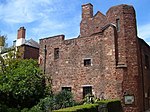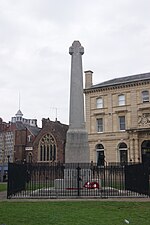George's Chapel, Exeter
Churches in ExeterDevon building and structure stubsEnglish church stubsGrade I listed churches in DevonUse British English from March 2017

George's Chapel or George's Meeting House was built in 1760 (the year of the coronation of George III) as a Presbyterian chapel. It was sold in 1987 and first became an antiques centre before being sold to JD Wetherspoon, who re-opened it as a pub in 2005, preserving many of the original features. It is a grade I listed building.
Excerpt from the Wikipedia article George's Chapel, Exeter (License: CC BY-SA 3.0, Authors, Images).George's Chapel, Exeter
South Street, Exeter St Thomas
Geographical coordinates (GPS) Address Website External links Nearby Places Show on map
Geographical coordinates (GPS)
| Latitude | Longitude |
|---|---|
| N 50.7206 ° | E -3.53 ° |
Address
George's Meeting House (Wetherspoons)
South Street 38
EX1 1ED Exeter, St Thomas
England, United Kingdom
Open on Google Maps










